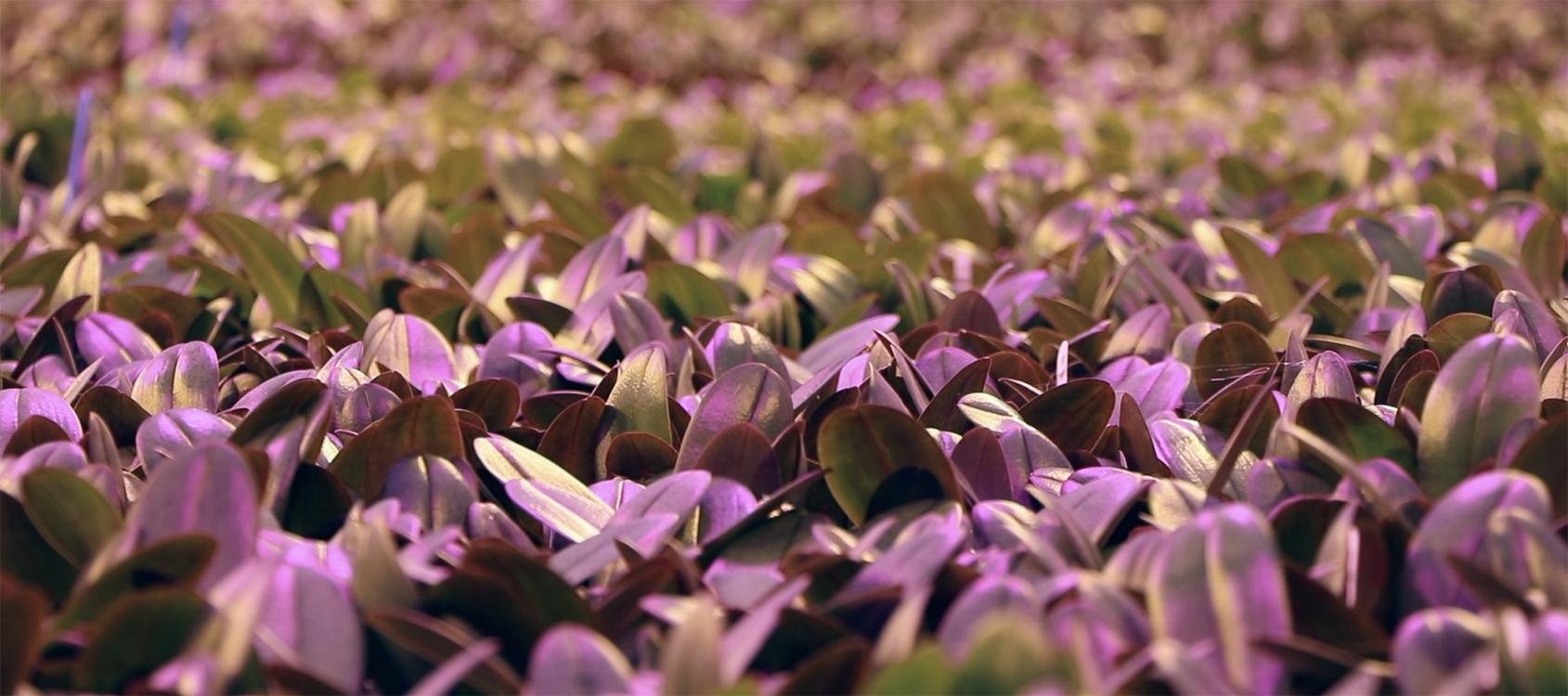Spot-on LED lights, data collection and stronger young plants
You are here

Spot-on LED lights, data collection and stronger young plants
When craftsmanship meets science
... a plant grows stronger. Growth means constant evolution and innovation, which is why we have switched from seed boxes to plugs, focus mainly on organic pesticides and successfully recuperate and reuse 80% of our water.
Knowledge is power
Data is the new gold, and the cultivation sector is no exception. Microflor is increasing its use of wireless sensors and data analysis techniques. We link historical data to physical measurements of growth, particularly of root and leaf formation. As a result, we have better insight and therefore stronger plants.
A few examples:
- We use scales to measure how quickly our plants dry up after watering. This helps us accurately plan the next watering. On top of that, these insights allow us to create better conditions for root growth and prevent the development of Fusarium.
- Fluorescence measurements allow us to measure light stress, so we can better control not only how much light a plant receives, but also when.
Thanks to new data analysis techniques, we can link the sensor data to other records, such as those of the climate computer, fertilization parameters, laboratory analyses and plant controls. This brings us closer and closer to our goal: a more robust cultivation and a better plant all year round.
Constant quality all year round, but how?
So, dark winters and hot summers no longer affect production? Of course, they do. But we know how to protect our plants. For years, we compensated the seasonal effects by extending cultivation time in winter. Fast forward to 2019, in the deep of winter, when we finally saw the light. And quite literally so: we discovered LED lights. Via a large-scale test, we investigated the effects of extra LED lighting in the second cultivation phase. The result? Strong root growth, but weaker leaf growth.
We continued experimenting in the winter of 2020/21. We adjusted the climate and nutrient content, eliminating the negative effects on leaf growth. This resulted in a good balance above and below the ground: young plants with stronger roots and around three pairs of leaves.
Our prediction: even stronger plants next winter
In the coming months, we are taking things up a notch by providing the entire second cultivation phase with additional LED lighting. Does this eliminate the seasonal effect entirely? Not yet, so we are expanding our test with extra lighting in the first phase. Our motto is “there’s always room for improvement”, so we continue to search for new and better sensors.
LED: additional protection in summer
Yet another advantage of LED lighting? Not only does it guide our plants through the dark winter months, it also protects them from extreme heat in summer. We can shield the plants from the heat while accommodating the resulting loss of light with LED lights, which don’t give off any extra heat – unlike the classic Son-T lights. On top of that, LED lights use 2 times less energy and last 3 times as long as Son-T lights. This makes them the perfect fit for our mission to become more sustainable and reduce our carbon footprint.
Curious? Our cultivation manager Arne Steelandt tells you more